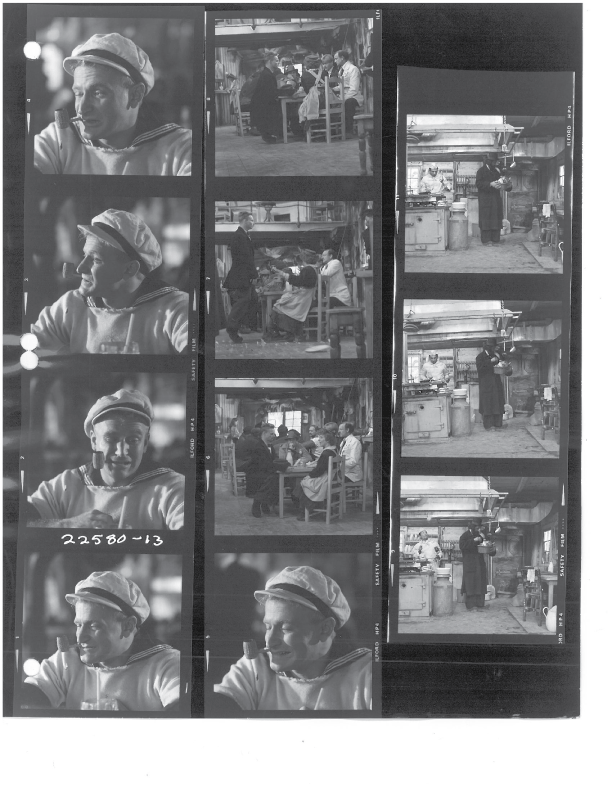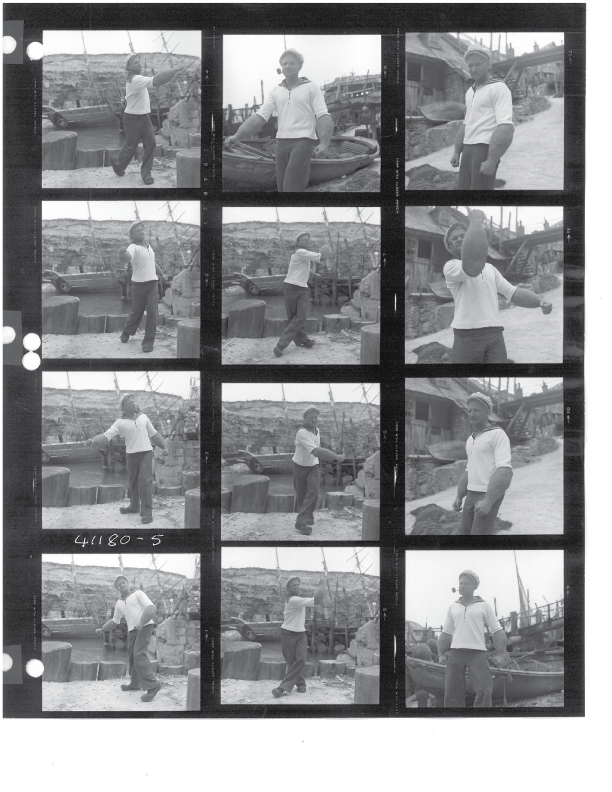Nestled in the nearly 800 boxes that comprise the Robert Altman Archive here at the University of Michigan’s Special Collections Library is a treasure trove of materials from his 1980 film Popeye, which featured Robin Williams as the mumbling, spinach eating sailor. Over the last two months since the unexpected passing of Williams, numerous magazines, websites and blogs have paid tribute to the departed comic genius. Chief among them is Eric Spitnagel’s piece for Vanity Fair’s Hollywood entitled Popeye is the Best Movie Robin Williams Ever Made. While many may gasp at Spitnagel’s judgment, his witty and humorous remarks demonstrate the loyalty certain Williams fans feel towards a film that is often maligned rather than rejoiced.
Few Altman films have divided people more than Popeye. Based on the comic strip created by E.C. Segar as well as the Fleischer Studios animated shorts produced in the 1930s, this live-action comedy musical starred Williams alongside actress Shelley Duvall, an Altman stalwart, who played to perfection Popeye’s sweetheart, Olive Oyl. Love it or hate, Popeye captures the spirit of Altman’s satiric sensibility, his disdain for authority and his signature use of zoom shots and overlapping soundtrack and preserves for posterity Williams’ acting ability and unmatched talent for mimicry and physical acting.
Thousands of previously unpublished photographs taken on the film’s off-kilter set are located in the archive. These contacts sheets reveal the creative process of translating a beloved character from page to screen and capture life on a movie set. In this sequence, we see how Williams worked to get two character details down: Popeye’s ubiquitous corncob pipe and his ever-present squint.

Contact sheet from the motion picture Popeye (1980).
Courtesy The University of Michigan, Special Collections Library, Robert Altman Archive
In his tribute to Williams published in The Hollywood Reporter, the film’s producer, Robert Evans, discusses one important detail that Williams needed to get right in order to create the character—the arms.
"He was unhappy with the arms. We were shooting in Malta, and the most difficult thing in the entire production was getting Popeye's arms right. And we needed Robin's OK to get them sent to Malta. It was the last thing we needed before we could start principal photography. They never looked real for him. It held up production for several weeks. We finally got them out of a place in Cleveland. The second he saw the arms, he knew he was Popeye. He was brilliant."

Contact sheet from the motion picture Popeye (1980).
Courtesy The University of Michigan, Special Collections Library, Robert Altman Archive.
This sequence of photos from the Altman Archive show Williams learning to embody the essence of Popeye with the use of the prop arms. Williams had to rely on his ability to channel the character's eccentricities to enhance the performance rather than on CGI technology to create the effect for him.
Since its initial release, a new generation has come to watch Popeye first on VHS and more recently on DVD. Children love the film, and seem to have an innate sense of what Altman and Williams were up to. At the Emmy Awards this year, Williams' friend Billy Crystal gave the most touching and succinct summary of the effect he had on us: "He made us laugh. Hard." Check out Popeye again. I think you will be surprised.